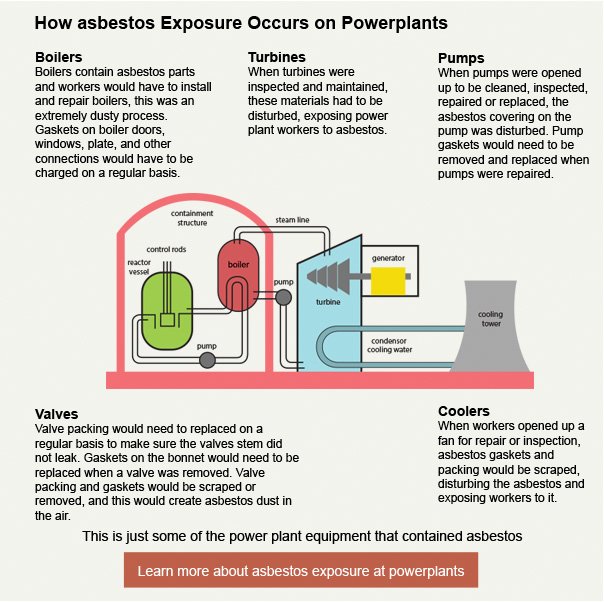Rochester Gas & Electric

Rochester Gas & Electric (RG&E) provides electricity to approximately 368,000 customers and natural gas to about 305,000 customers across a nine-county region centered on Rochester, New York.
It is a subsidiary of the energy services and delivery company Iberdrola, S.A., which has almost 3 million customers throughout upstate New York and New England.
Specific Power Plants
Table of Contents
Rochester Gas & Electric Russell Station
Years of Operation: 1948 – 2008
Address: Rochester, New York
The first power generation unit at Rochester Gas & Electric’s Russell Station was constructed in 1948. Eventually four coal-fired units were built on the shores of Lake Ontario near Rochester, New York with the last one completed in 1957. At its peak the facility generated 253 megawatts of power. Operations at Russell station ceased in 2008.
Rochester Gas & Electric has announced plans to demolish all of the structures and buildings sitting on the Russell Station site as well as to remove all equipment, roads and paved surfaces. It will also close off the part of the cooling water intake system that runs to the outer wall of the station from Lake Ontario.
The goal is to remove all plant structures and infrastructure up to three feet below grade and decontaminate and abandon-in-place deeper structures. The site’s two electric yards, transmission substation, and groundwater treatment and collection system will remain.
After the site has been rid of toxic substances such as heavy metals and asbestos and demolition activities are finished, Rochester Gas & Electric plans to cover the area with topsoil and seed it. Additional plans include installing new lighting and fencing, repaving remaining access roads, and improving site drainage. The work completion target is late 2016.
Rochester Gas & Electric Ginna Nuclear Station
Years of Operation: 1970-2004
Address: Wayne County
The Robert E. Ginna Nuclear Power Plant has continuously operated since 1970. The plant, located on the southern shore of Lake Ontario in Wayne County, New York is one of the oldest nuclear reactors still operating in the U.S.
On January 25, 1982 a steam generator tube ruptured, releasing a small amount of radioactive steam. It took workers approximately 93 minutes to repair the leak, which led to a site emergency being declared by company officials. The accident focused a great deal of local and national attention on the plant because it occurred soon after the accident at Three Mile Island.
Rochester Gas & Electric (RG&E) replaced the original steam generators in 1996, resulting in the facility’s rating being upgraded by the U.S. Nuclear Regulatory Commission. The plant’s operating license, which was originally set to expire in 2009, was extended another 20 years.
RG&E owned and operated the Ginna plant until 2004, when it was sold to Constellation Energy. Exelon, Constellation’s parent company, now owns and operates the facility, although RG&E still purchases power generated at Ginna.
There were concerns that Ginna would have to close due to financial losses brought about by hydrofracking, an extraction technique that provides cheap natural gas to gas-burning power plants, but in 2014 the Public Service Commission ordered RG&E to negotiate a plan with Exelon to keep the plant running.
Rochester Gas & Electric Beebee Station
Years of Operation: 1892-1999
Address: Rochester
Beebee Station is an out-of-service coal-fired power plant located in Rochester, New York.
It opened in 1892, began winding down operations in 1984, and save for certain auxiliary functions such as the certification of equipment and the maintenance of a distribution substation, became non-operational in 1999. Two of the plant’s three smokestacks were demolished in 2007 and the last smokestack was torn down in 2013.
Rochester Gas & Electric (RG&E) had been in talks for a decade with land developers who wanted to turn the facility into an entertainment district. In the United States there’s been a trend towards readapting shuttered coal plants for commercial space, and there was strong public sentiment in favor of such a move for Beebee. RG&E, however, favored demolition and applied for the appropriate permits in November 2013.
RG&E plans to remove all buildings and structures on the site and turn it into open space. Before that can be done, hazardous materials that include asbestos and lead paint must be remediated. The target to complete all work is October 2016.
Company History


Several prominent citizens, including the son of city founder Nathaniel Rochester, joined together to form the Rochester Gas Light Company in hopes of spurring business investment to rival the nearby city of Buffalo.
When, in 1848, the Rochester Gas Light Company was granted permission by the city council to install gas mains and erect gas light posts, Rochester had already grown to more than 30,000 people. By the start of the Civil War in 1861 the Rochester Gas Light Company had approximately 2,500 customers and more than 650 street lamps.
When Thomas Edison invented the incandescent electric bulb in 1876 it became clear that the days of gas lighting were numbered. In 1879 the people of Rochester saw their first exhibition of electric light when city hall was illuminated. The next year, the Rochester Gas Light Company became the Rochester Electric Light Company.
By the late 1880s there were three electric companies competing in Rochester, the most successful of which was the Edison Electric Company. Edison Electric was the first company in the country to not only use electric meters to measure electricity use, but also to install electric wiring underground. Edison and its two competitors consolidated in 1892 to form the Rochester Gas and Electric Company.
RG&E began a rapid expansion after World War I, including the 1925 construction of a hydroelectric dam that spanned the Genesee River. This period coincided with the introduction of household electronic goods such as toasters, washing machines, vacuums, and air conditioners—goods that drove increased energy demand. During World War II RG&E was one of the few U.S. utilities that did not have to reduce or ration services to its customers.
RG&E switched from manufactured gas to natural gas in 1952, a move that reduced costs and helped to increase exponentially its customer base. By 1956 the company had more than 145,000 customers. As it did during the Great Depression, the company was able to withstand the severe recession that struck the country in the late 1950s.
Expansion continued during the 1960s as RG&E, seeking to meet a huge spike in energy demand, delved into nuclear power. It spent $75 million on the construction of the Ginna Nuclear Power Plant in 1966. The Ginna plant, named one of the safest in the U.S. by the Nuclear Regulatory Commission (NRC), could deliver nearly a half million kilowatts of electricity at its peak.
RG&E acquired part ownership of another nuclear power facility, Nine Mile Two on Oswego Lake, in 1988. The safety record of this facility hasn’t been nearly as impressive, with several maintenance, safety and emergency preparedness problems leading to the site being blacklisted by the NRC until 1991.
Nine Mile was the company’s last foray into nuclear power. In an effort to diversify its interests, RG&E invested in the Empire State Pipeline project, a natural gas pipeline that runs from Niagara Falls to Syracuse, and formed the computer software company Utilicom.
RGS Energy Group, Inc., a holding company and parent company of RG&E, formed in 1999. RGS was acquired by Energy East Corp. in 2001 and the Spanish company Iberdrola S.A. bought Energy East in 2007.
Asbestos Exposure at Rochester Gas and Electric


Generating electricity—whether it is done by burning coal or oil at facilities like Beebee Station and Russell Station or through nuclear fission as is done at nuclear power plants like Ginna—is a heat-intensive process.
In both types of plants water is heated into steam. The steam turns a turbine which is connected to a generator, thus producing electricity. Nuclear plants have boiling water reactors where water is turned to steam by fission. Coal-fired plants have boilers that burn coal to create steam. Oil is sometimes used in place of coal. Both types of plants also have extensive networks of pipes and pumps to move water and steam.
Pipes, pumps, boilers, turbines, valves, condensers and other equipment involved in this process required insulation which was often asbestos-containing. This equipment also used asbestos gaskets and packing.


Diagnosed With Mesothelioma? Get a Free Case Review.
The trusted mesothelioma attorneys at Belluck & Fox, LLP have represented former employees of RG&E plants. We know where asbestos was used at these sites, how workers were exposed to asbestos, and which companies supplied the asbestos to Rochester Gas & Electric.
We will use this knowledge and our decades of legal experience to protect you and your family. Visit our attorneys in the city of New York and Woodstock now.
Learn more through a free consultation. Send us an online message or call 518-621-2699 to get started.
Related Companies:
